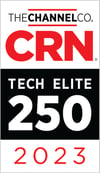Data management is the key to data storage retrieval. Storing data efficiently and quickly accessing it is essential because so many organizations use automation and advanced analytics, such as artificial intelligence, to make business decisions and perform critical operations. Working with complete, accurate, and current data keeps a business competitive.
To solve these problems with data management, organizations should rethink their IT infrastructure approach to avoid complexity. Computer Weekly reported that most of the value of adopting hyperconverged infrastructure (HCI) comes from its simplification of operations and management. In particular, HCI simplifies data management, helping companies meet the requirements of today’s data-driven workloads.Data Management Challenges
Data management has become more complex and difficult because of changes in the way companies do business and use technology. Today, organizations rely on endpoints for the remote workplace and the internet of things (IoT). These dispersed environments make uniform management of data complex and can create information silos.
These data silos prevent applications from obtaining a complete picture of relevant data. Data powers automation and analytics applications that must retrieve all the information they need to perform workflows and gain accurate and deep insights.
Data also needs to be stored on the right storage medium based on its level of activity. Frequently accessed information critical to the business should be stored on faster drives, while archival data can be kept on less expensive, slower drives. Ensuring data goes to the right place either requires some level of automation or specialized expertise.
Built-In Data Management With HCI
Storage, compute, and networking run as a single platform in an HCI environment, allowing applications to access all the required data. Storage is available in the hypervisor, so capacity can be added if needed, enabling the system administrator to manage all the application data resources seamlessly.
HCI uses a single pane of glass to control storage and applications across the business. The management interface allows the automation of management processes, such as data management.
By treating storage as a pooled resource, HCI gives workloads and applications access to all the resources they need. Unified management can locate and obtain unused storage capacity from other clustered appliances if an application needs more resources.
Built-in data tiering ensures that data is stored on the right medium based on the frequency of access. With Nutanix HCI, the Acropolis operating system pools storage from across the cluster instead of reserving faster storage. Acropolis OS moves data between tiers in granular segments, storing active data on the fastest drives.
HCI Data Management Functionality
HCI has data management functionality, such as deduplication and compression, for the efficient storage of data. For example, Nutanix HCI optimizes storage resources through intelligent and adaptive data reduction. Nutanix provides continuous deduplication and dynamic compression, empowering your company to store more data using less capacity while still achieving high levels of performance.
Taking Advantage of Simplified Management With HCI
Simplified data management is only part of the picture of what HCI can do to transform the way your company optimizes its IT operations. HCI’s unified management automates many processes associated with storage, compute, and networking.
ProActive Solutions can work with your company to evaluate HCI and address its requirements. We maintain strategic partnerships with the leading HCI solutions, including Nutanix and Dell EMC. Nutanix and Dell EMC are both Leaders in the Gartner Magic Quadrant for HCI, with Nutanix holding the highest position.
Nutanix HCI keeps data local to the application for the highest performance level and uses machine learning to balance resource consumption across the entire environment. Dell VxRail supports workloads and applications with the most demanding data and performance requirements.
Find out more about how HCI and other technologies can transform your data center. Read the ProActive eBook The Complete Guide to Software-Defined Everything.



